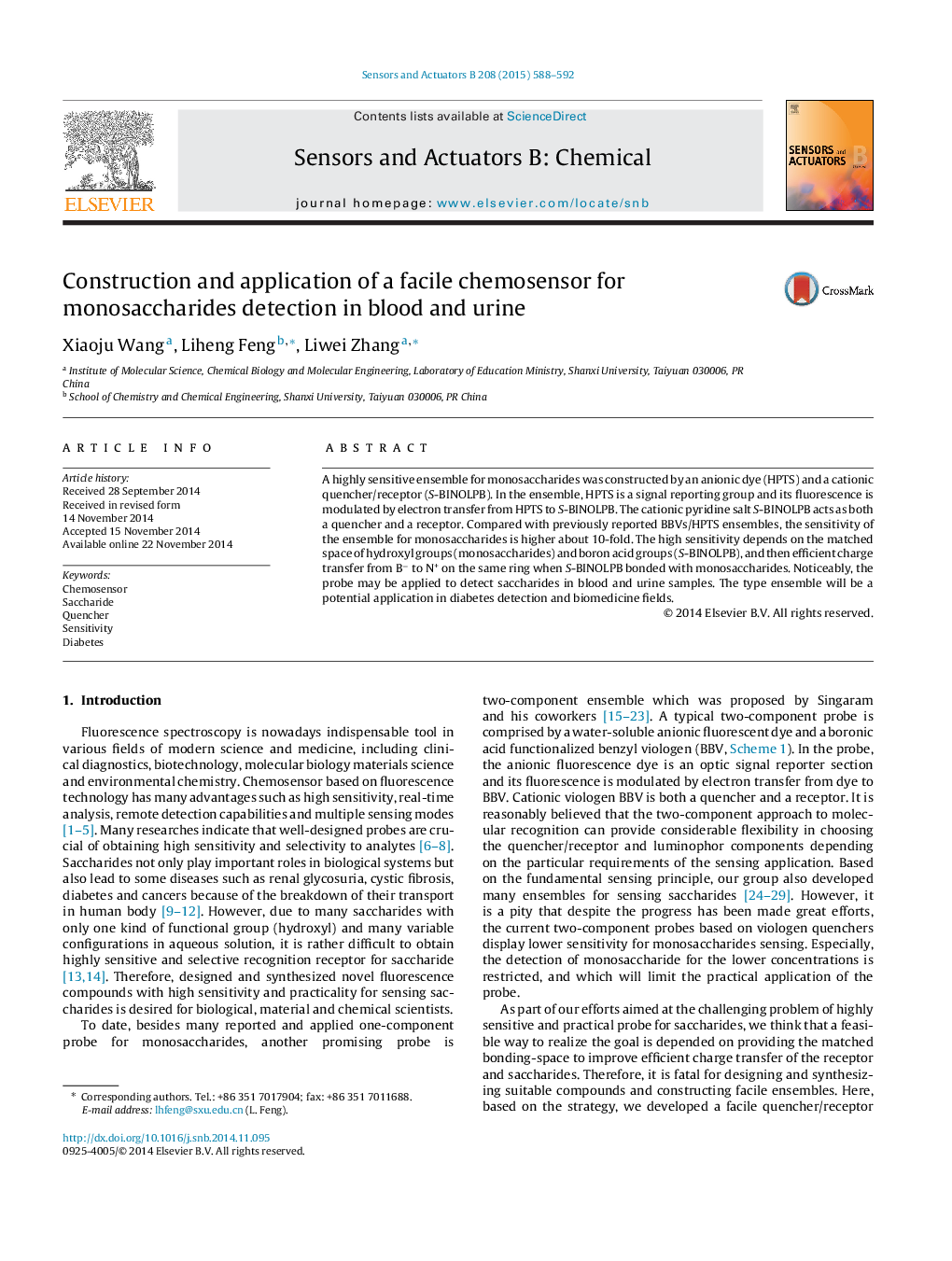| Article ID | Journal | Published Year | Pages | File Type |
|---|---|---|---|---|
| 750864 | Sensors and Actuators B: Chemical | 2015 | 5 Pages |
A highly sensitive ensemble for monosaccharides was constructed by an anionic dye (HPTS) and a cationic quencher/receptor (S-BINOLPB). In the ensemble, HPTS is a signal reporting group and its fluorescence is modulated by electron transfer from HPTS to S-BINOLPB. The cationic pyridine salt S-BINOLPB acts as both a quencher and a receptor. Compared with previously reported BBVs/HPTS ensembles, the sensitivity of the ensemble for monosaccharides is higher about 10-fold. The high sensitivity depends on the matched space of hydroxyl groups (monosaccharides) and boron acid groups (S-BINOLPB), and then efficient charge transfer from B− to N+ on the same ring when S-BINOLPB bonded with monosaccharides. Noticeably, the probe may be applied to detect saccharides in blood and urine samples. The type ensemble will be a potential application in diabetes detection and biomedicine fields.
